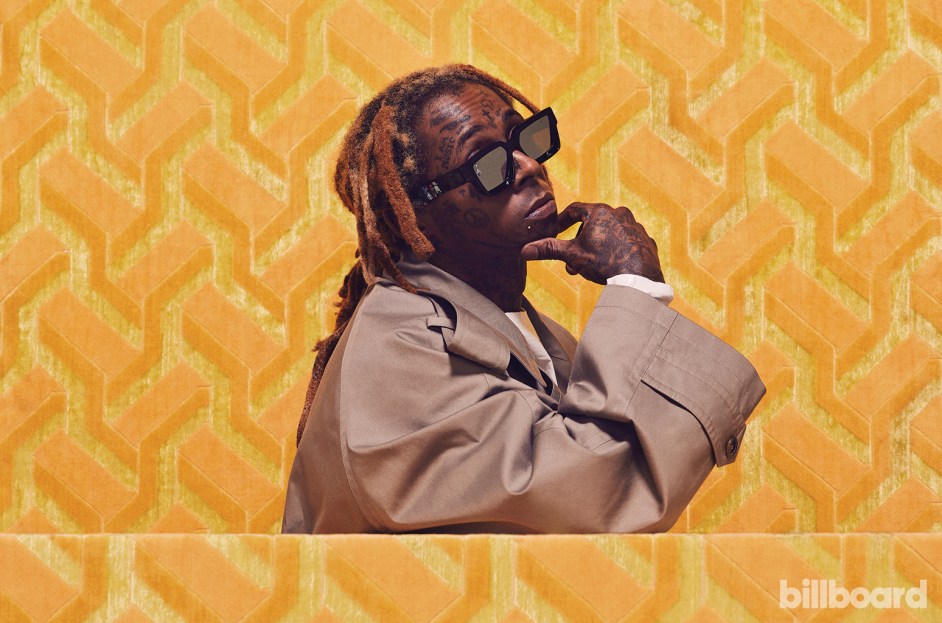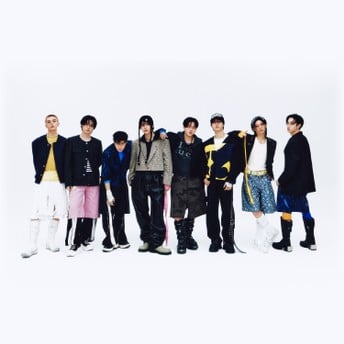
Lil Wayne photographed on July 9, 2023 at Quixote Studios in Los Angeles.
Ramona Rosales
Over the weekend, Lil Wayne shook the game up once again by dropping off his latest album Tha Carter VI. To celebrate the release, Weezy also hosted a blockbuster show at New York’s Madison Square Garden on Friday (June 6), where he ran through hits both new and old, flexing his dominating catalog in a star-studded 70 minute showcase. It was a glorious reminder of Tunechi’s unparalleled greatness and hard work. From his early days as a Hot Boy, to his legendary mixtape run, to his groundbreaking studio records, Wayne’s awe-inspiring grind resulted in one of the greatest outputs in hip-hop history.
Over the years, Weezy has evolved into a genre-defining figure, and his catalog as a result is a wild ride filled with exorbitant highs (Tha Carter III) and crushing lows (Rebirth). Not every Wayne album is perfect — and from our first handful of listens, Tha Carter VI might unfortunately be one of his more imperfect releases — but the New Orleans spitter has made a career out of taking creative risks regardless of the outcome, and that needs to be applauded. Even when these risks haven’t paid off, it’s undeniable that Wayne has forever changed the course of mainstream rap because of them.
Whether you’re a longtime fan or not, the breakdown below of Wayne’s albums aim to celebrate the highs, acknowledge the missteps and explore how Weezy’s music reflects a career forever defined by resilience, reinvention and a relentless amount of unparalleled lyricism. Let’s dive in and see how the legacy stacks up, one album at a time.
-
Rebirth
While Lil Wayne should be praised for his experimentation, Rebirth’s risky venture down a rock-and-roll-trodden path didn’t garner the best results. “Drop The World” was the only major success, as Weezy’s Auto-Tuned drizzlings and occasional guitar riffs couldn’t save the record from flop status. Regardless, it reaffirmed his status as a creative risktaker, and you can’t fully hate on Wayne’s earnest-if-dated attempt to try and shake up the music industry snow globe. (Weezy did rap “Confidence is the stain they can’t wipe off” on “Drop.”) His commitment was and remains endearing. — MACKENZIE CUMMINGS-GRADY
-
Tha Carter VI
Unlike Tom Cruise’s Mission: Impossible franchise — which only seems to get better over time — the same can’t be said for Lil Wayne’s beloved Carter series. On Friday (June 6), Wayne unloaded his sixth entry and whiffed entirely. The lackluster showing isn’t solely his fault — he flashes glimpses of vintage, Martian-level creativity on the BigXthaPlug-assisted “Hip-Hop” and the ovation-worthy outro “Written History.” But what derails the entire experience is his porous beat selection: “Peanuts 2 N Elephant,” produced by Lin-Manuel Miranda, is a full-blown trainwreck, while “If I Played Guitar” is a putrid rehash of “How to Love.” Unless Wayne brings in better producers, he may need to retire the Carter name before it further muddies the legacy of this legendary series. — CARL LAMARRE
-
FWA
While far from Wayne’s strongest album, FWA makes sense under the context with which it was created. Made in 2015, during a time when Birdman appeared to holding Carter V hostage, FWA was created as an exclusive under the Tidal streaming service, with which Weezy was a fellow “artist owner.” This means that FWA was created either with demos or under duress, either way leading to an uneven project filled with solid bars over solid beats. Memorability never felt like the goal of FWA, with songs like “London Roads” and “Murda” merely proving ghostly echoes of Carter IV’s past. Instead, the set served as more of a necessary reminder that Weezy was still here, and largely succeeded at satiating his restless fans for a bit longer before the Carter V could finally see the light of day later in the decade. — M.C.G.
-
5000 Degreez
2002’s 5000 Degreez showcased a young 19-year-old Lil Wayne finding his voice. The tape was full of ripe potential, with songs like “Where You At” and “Way of Life” offering glimpses of the hip-hop powerhouse Tunechi would soon become. But 5000 Degreez felt shrouded in a fog of monotony: The tape was obviously meant as an ode to Juvenile’s 4000 Degreez, but what emerged in Weezy’s version was a lot of similarly constructed club records that bled into one another. Pockets of greatness did emerge through that fog, but clearly the best was yet to come. — M.C.G.
-
I Am Not a Human Being 2
I Am Not a Human Being 2 was almost destined to be a slump, considering even Weezy himself derided the project as a “bum-ass album” before its 2013 release. The standout singles (“Love Me”, “Rich as F—k,” “No Worries,”) were the only particularly memorable tracks, making some solid impact in clubs and on radio. Even then, these were far from Weezy’s greatest lyrical accomplishments, and at times felt almost satirical (“P—y in my face, I ain’t got no worries”). Every other song came and went as quickly as a gentle breeze, and a major days-long health scare for Wayne lessened the work’s commercial impact even further. — M.C.G.
-
I Am Not a Human Being
The original I Am Not a Human Being came at a strange time in Weezy’s career. Released right before his own release from jail on a gun possession charge, the album felt immeasurable in terms of what it meant for Wayne’s career at this moment. And the Drake-assisted four-peat of “Gonorrhea,” “With You,” “I’m Single” and “Right Above It” all stuck the landing, capturing the waning Young Money chemistry at one of its last high points.
But the album’s other tracks — even some of the ventures with Nicki Minaj — felt undercooked, considering how high the stakes were for Wayne’s career. Would Weezy emerge from jail able to return to his era of dominance? Would he fall back and recalibrate? I Am Not a Human Being, which included songs mostly recorded before his eight month Rikers Island stint, did not offer any clear answers. — M.C.G.
-
Funeral
Emerging after the pressure surrounding Carter V’s release had finally lifted, 2020’s Funeral served as a playful return to form for Weezy. Tapping back into a breakneck level of efficiency seen during his prolific post-Carter II mixtape run, Wayne raps about nothing in particular with a devilish glint in his eye. Songs like “Bastard (Satan’s Kid)” and “Line Em Up” cover the usual array of braggadocious Wayne topics — being the best, smoking that loud, eliminating the opps — but it’s clear he feels a sense of relief while he raps. Wayne can’t seem to get the bars out fast enough. Yes, Funeral is bloated, and its slower songs drag the tape down to a slog, but hearing Wayne have fun again after the emotional and legal turmoil surrounding the Carter V made the highs of Funeral feel very high. — M.C.G.
-
Tha Block Is Hot
Tha Block Is Hot will always have a nostalgic place in the heart of any longtime Weezy fan. Songs like “Tha Block Is Hot” and “Loud Pipes” will always get a party going, and “F—k tha World” will always cause some diehard Wayne fan to step out of the woodwork and rap it word-for-word. Wayne’s 1999 debut was quickly overshadowed by much of what came after, but Tha Block Is Hot is filled with the bristling potential of a future rap superstar. — M.C.G.
-
Lights Out
Arguably his most underrated album, 2000’s Lights Out showed glimpses of Wayne’s superstar potential and songwriting prowess. It’s also the first album where he starts to hint at Jay-Z’s influence — specifically on the track “Lil One,” where he and Baby perform their own version of Jigga and Memphis Bleek’s “Coming of Age” series. Then, there’s the standout Hot Boys posse cut “Shine,” which proved once again that Weezy and Cash Money weren’t just a Southern Rap phenomenon: It was a favorite in the New York City area back then, getting major play in this writer’s car specifically. — ANGEL DIAZ
-
Tha Carter V
From the legal drama, to the personal turmoil between Birdman and Weezy, to the blockbuster run of Carter II through IV, The Carter V’s hype was impossible to match by the time it dropped in 2018. Still, the album met the colossal moment to the best of its ability: “Uproar” remains a classic, and gave Wayne his first lead major radio hit as a lead artist in years.
Meanwhile, “Mona Lisa” made good on the long-awaited sparring match between K-Dot and Weezy with a tongue-twisting flurry of a song, and Nicki Minaj offered an excellent R&B feature on “Dark Side of the Moon.” Still, there were only a few obvious standout moments across the album, which is surprising considering its nearly hour-and-a-half runtime. While it’s far from Weezy’s best Carter entry, Tha Carter V was an undeniably solid return for Tunechi. — M.C.G.
-
Tha Carter
The album that started it all. While Tha Block Is Hot announced Weezy’s arrival, Tha Carter announced his candidacy for Greatest Rapper Alive status. With Mannie Fresh cooking up some of his most gourmet instrumentals ever, Lil Wayne completely shifted his style of rapping to a braggadocious flair heavily inspired by the elegance of Jay-Z. “Go D.J.,” “Earthquake” and “This Is The Carter” are just a few of the classics that appeared on the project, and while even better Carter editions would soon follow, the first served as the rumble of thunder in the distance, signaling that a massive storm was coming. — M.C.G.
-
Tha Carter IV
After clinching a “three-peat” with his trio of Carter albums, Wayne salivated at the idea of securing another game-winning performance on Tha Carter IV. Tracks like “6 Foot 7 Foot,” “Nightmares of the Bottom,” “She Will” and “John” showcased the New Orleans werewolf still operating near his peak. But the album lacked the horsepower that made Carter II and Carter III hum, and though it delivered another near-million in first-week sales, a few unfortunate missteps — including his limp shots at Pusha T on “It’s Good” and his drowsy, insipid take on romance in “How to Love” — ultimately soured Tha Carter IV’s potential to match its two predecessors. — C.L.
-
Tha Carter III
After establishing himself as one of hip-hop’s most cerebral lyricists on Tha Carter II, Wayne had his sights set on mainstream dominance with Tha Carter III. Unlike its predecessor, Wayne’s stab at pop superstardom was deliberate. Songs like “Lollipop” and “Mrs. Officer” were melodic ear candy, while records such as “A Milli” and “Mr. Carter” fortified his lyrical firepower. Wayne’s transformation from Hot Boy sidekick to Rap Goblin was complete when he decoded his genius on this 2008 masterwork, becoming hip-hop’s most undeniable typhoon. — C.L.
-
Tha Carter II
Sometimes, a rapper enters a zone that few have been able to enter. Fresh off the promising first entry in Tha Carter series, Wayne entered rarified air and delivered his first classic album, which then put him on an ascent that he’s just now recently coming down from. Tha Carter II officially made Lil Wayne a superstar, putting him in the conversation for Best Rapper Alive with songs like “Tha Mobb,” “Money on My Mind,” and “Hustler Musik,” all of which remain classics in his catalog.
And while those tracks foreshadowed what he had up his sleeve lyrically with his much talked about mixtape run that came after, a record like “Shooter” featuring Robin Thicke showed that he also had the mainstream appeal — which we would see come to a head on the massive third Carter album, when he sold a mind-boggling one million copies during its first week. Tha Carter II was his launching pad into a new stratosphere. — A.D.

 State Champ Radio
State Champ Radio 




